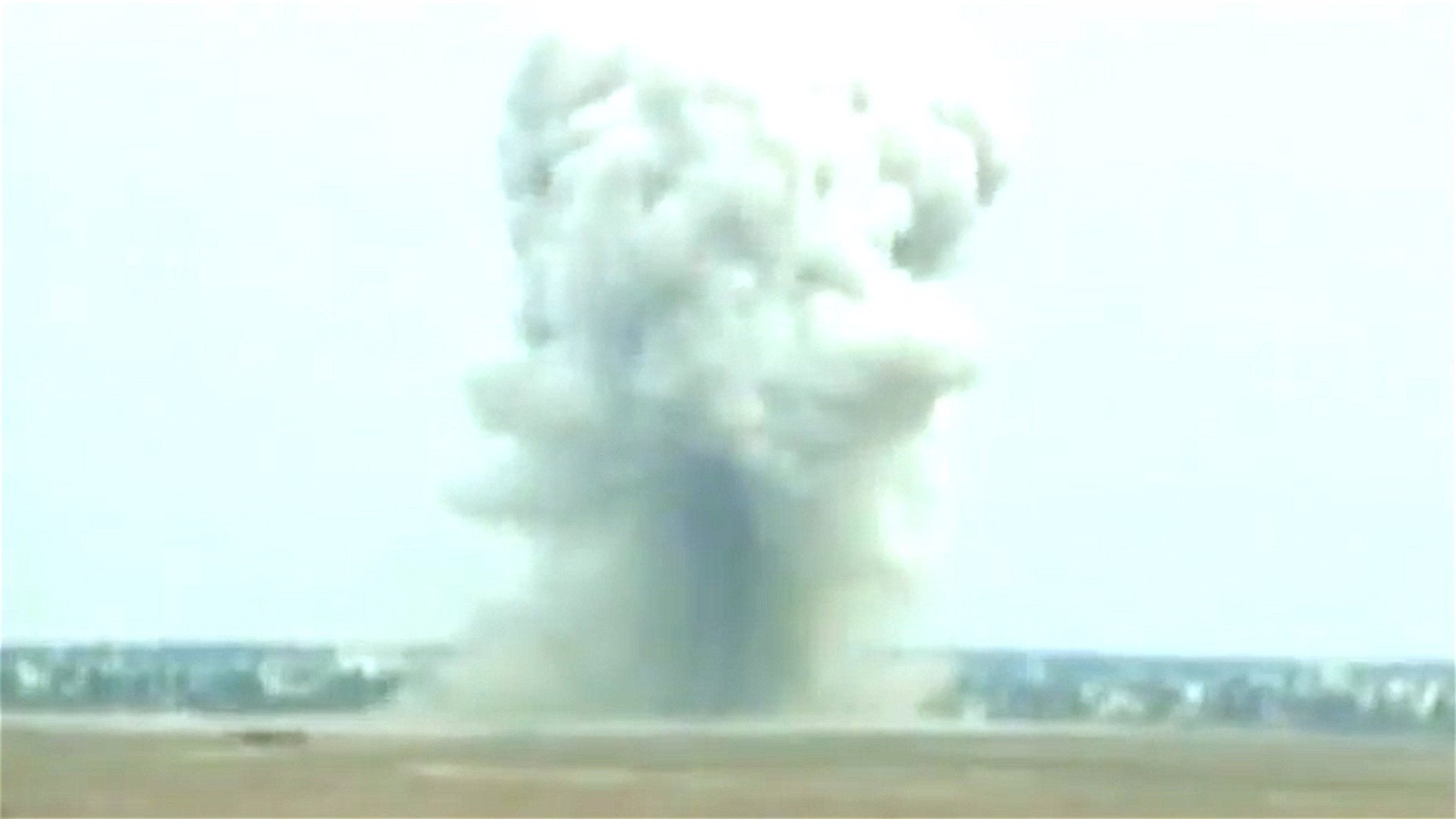Afghan defense officials confirmed Friday that 36 Islamic State militants were killed when the U.S. dropped what is known as “mother of all bombs” on a remote part of Afghanistan Thursday, targeting a network of caves and tunnels used by the terrorist group.The bomb was the second show of military might by U.S. forces in the space of just seven days, following the missile attack on a Syrian government air base on April 7, in retaliation for alleged regime chemical attacks on civilians. U.S. President Donald Trump hailed the deployment of the so-called MOAB bomb in eastern Afghanistan as “another successful job.”Afghan defense ministry spokesman Dawlat Waziri said: “As a result of the bombing, key Daesh [ISIS] hideouts and deep tunnel complex were destroyed and 36 IS fighters were killed,” adding that “no civilian has been hurt and only the base, which Daesh used to launch attacks in other parts of the province, was destroyed.”ISIS-affiliated media released a statement Friday contradicting this account, however, saying that none of their fighters or any of their civilian “supporters” were killed or injured in the bomb blast.While ISIS is a growing concern for the Afghan government, the Taliban is still dominates in the country, with the U.S.’s fight against Islamic State primarily focused on Iraq and Syria. According to one U.S. official speaking to CNN, there are between 600 and 800 fighters aligned to the offshoot of ISIS in Afghanistan — which some suspect may no longer be loyal to the wider ISIS movement.On Friday morning U.S. Central Command released video footage of the explosion in Nangarhar province, near the Pakistan border:Some have condemned the attack, including former Afghan President Hamid Karzai, who said the dropping of the bomb was not part of the war on terror, but “the inhuman and most brutal misuse of our country as testing ground for new and dangerous weapons.” The attack was also condemned by the Taliban as “brutal, inhuman, and a war crime.”
Advertisement
Here’s what you need to know:
Advertisement
- Unsurprisingly, most of the attention on this attack has been focused on the size of the bomb, given that it is described as the biggest non-nuclear weapon in the U.S. arsenal. Formally known as the GBU-43, or massive ordnance air blast (MOAB) bomb, it is colloquially known as the “mother of all bombs.” It is 30 feet long, weighs nearly 11 tons, and carried nearly 19,000 pounds of H-6 explosives. But size isn’t everything.
- While some have compared the MOAB to the Little Boy bomb that struck Hiroshima in 1945, this is not nearly close to being accurate. As James Acton, co-director of the Carnegie Nuclear Policy Program points out, the MOAB releases about 0.1 percent as much energy as the Hiroshima bomb did.
- That said, the bomb did create a major impact on those living in the region. Local governor Ismail Shinwari told AFP: “The explosion was the biggest I have ever seen. Towering flames engulfed the area.” This is how one local, who lives 1.5 miles from the site of the blast, described the moment of impact to the Guardian: “The earth felt like a boat in a storm. I thought my house was being bombed.” Another local resident described what happened to CNN as an “extremely loud boom that smashed the windows of our house. We were all scared and my children and my wife were crying. We thought it had happened right in front of our house.”
- General John Nicholson, the U.S. Commander for the NATO mission in Afghanistan, defended the decision to use the bomb: “This was the right weapon against the right target.” It is thought that Nicholson rather than Trump, was the one who signed off on the use of the bomb. The White House has yet to clarify its position on Afghanistan, with Trump indicating he wants to get out of nation-building, while at the same time promising to “bomb the shit out of ISIS.” Some have suggested the use of the bomb was meant to be a signal to countries like North Korea and Iran, but Trump himself said Thursday: “I don’t know if this sends a message; it doesn’t make any difference if it does or does not.”

